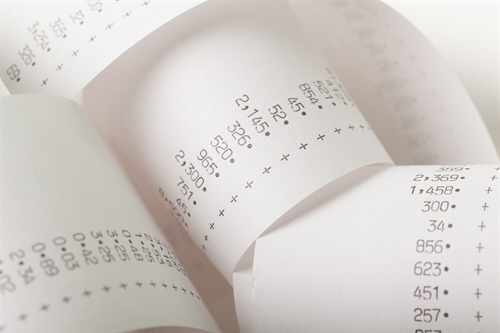 How to Organize Receipts For Taxes And Your Bookkeeper
How to Organize Receipts For Taxes And Your Bookkeeper
As a business owner, you probably never say “no” when asked if you would like a receipt. It’s almost an instinct to accept a receipt for even the smallest purchases. This usually leads to an ever-growing pile of paper receipts that, at the end of the year, can seem impossible to organize. And while it’s not impossible, it definitely is time-consuming if you neglect simple tasks throughout the year.
This gathering of receipts isn’t usually a side effect of a business owner’s desire to spend hours and hours organizing them. It’s more of an automatic response that will hopefully help you to get more out of your tax return while also preventing that dreaded audit.
Even if you have immaculate books and records that detail exactly what your expenses were for the year, without receipts and documentation to prove these expenses, you can be at risk of an audit.
So what can you do to organize your receipts for taxes?
1. Categorize receipts
The importance of categorizing your receipts should not be understated. Many business owners are tempted to organize receipts by month, but to make it easier for your bookkeeper (and lest costly for you) we recommend organizing by category. This includes Meals & Entertainment, Office Supplies, Advertising, Tools, Rent etc.
Note: keep your Meals & Entertainment receipts separate from other categories, as usually only half of the GST on these expenses can be claimed. There are circumstances when we can write these off at 100%, but it’s still a good idea to keep these separate.
2. Write the business purpose on less obvious receipts
You will probably remember why you bought a printer from Staples, but you might not remember why you went for dinner to the Olive Garden at the beginning of the year. To help you and your bookkeeper keep things legitimate, take note of why the receipt can be considered a business expense.
3. Itemize multiple categories on a receipt
There are times when you may get a receipt that includes multiple items from different categories. For example, you may buy a printer from Walmart as well as a meal or snacks for the office. In these cases, we recommend circling or highlighting the items that are for different categories.
4. Print online receipts
No, the paperless future is not upon us! At least for the bookkeeping industry, it will be a long while before this option is feasible. For now, it’s recommended to print your emailed receipts and invoices to avoid any confusion and to make it easier on your bookkeeper. This will also help you avoid needless costs like printing and documenting fees that many bookkeepers might charge.
5. Avoid cash!
Seriously, avoid cash like the plague. If you are trying to maintain immaculate books and documentation for the worst-case scenario audit, use your debit or credit cards for all of your purchases. Cash is very difficult to track and impossible to reconcile, even with receipts. To keep things as smooth and hassle-free as possible, don’t use cash for any business expenses.
Save time and money with these tips
Yes, completing these tasks may take a small amount of time throughout the year, but it can save you money from bookkeeping fees as well as the huge hassle and headache of an audit. If you have any questions about how to organize your receipts or the types of expenses that you can safely write off, give Small Business Bookkeeping Solutions a call!




